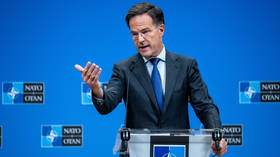Oil is back in demand as drivers return to the roads
Oil demand is on the rise as countries across the globe begin easing lockdown restrictions and commuters head back to work.
From China and Spain to the United States, people are gradually returning to driving their cars as countries and US states re-open for business. People feel safer commuting in their own vehicles than they do using public transportation as social distancing is still on their minds despite the re-opening of economies.The uptick in commuter driving and expectations of increased road trips at the expense of flying for vacations this summer is set to support a gradual recovery of oil demand as gasoline demand has started to rise in all markets compared to the lows in late March and early April.
The increased car usage may be a short-lived phenomenon until fears of using public transportation subside. Nevertheless, higher gasoline demand—including in the United States—is set to help oil demand regain some ground in the coming months. On the other hand, jet fuel demand is still expected to suffer the most from the pandemic, with the thousands of grounded flights and the quarantine measures that many countries have for arrivals of passengers via airplanes.
Major oil firms with extensive fuel retail operations say that the use of cars is now the preferred way to travel.
Also on rt.com The car is a symbol of freedom and mobility. Covid-19 isn’t going to change that“[P]eople are using more of their cars because they are afraid to use public transportation than before,” Patrick Pouyanne, chairman and chief executive officer at France’s oil and gas supermajor Total said on the earnings call last week.
“At least, at the beginning of our way back to normality, we expect a decrease in the use of public transportation, an increase in personal one,” Josu Jon Imaz San Miguel, CEO and Executive Director at Repsol said on the Spanish major’s earnings call.
In China, which has been viewed as a litmus test for analysts about what to expect when the rest of the world re-opens, rush hours and traffic jams are back in major cities, including in Wuhan, TomTom data shows.
At the same time, the use of the subway in Beijing, Shanghai, and Guangzhou has plunged by 53 percent, 29 percent, and 39 percent compared to the usage before the pandemic, data compiled by BloombergNEF showed.
“It is likely that people will use public transport less, given subways, buses and trains have been a major — if not the primary — transmission vector for the virus,” Cuneyt Kazokoglu, head of oil demand analysis at energy consultancy FGE, wrote in Financial Times earlier this month.
Road transport could even benefit – potentially for years to come – from the crisis as higher usage of passenger cars may support gasoline demand after lockdowns are eased, Kazokoglu said.
Also on rt.com Coronavirus pandemic to cost global airlines $314 BILLION in revenue – IATAIn the United States, the latest available EIA data shows gasoline demand in the week ending May 1 was 6.664 million barrels per day (bpd), up from 5.86 million bpd in the prior week, although it was still well below the 9.482 million bpd demand for the same week last year.
“Gas demand is expected to continue to grow, leading pump prices to continue their increase through the weekend,” AAA said on Thursday, a day after the EIA’s weekly report on crude and gasoline inventories.
“Demand has been rising for four consecutive weeks, although it was still down 32 percent from the equivalent week of 2019,” Ed Crooks, Vice-Chair, Americas at Wood Mackenzie, said in a note on Friday.
Despite signs that gasoline demand has already started to recover from the worst destruction in early April, the road to gasoline recovery will be very gradual, while jet fuel demand will likely take years to return to around pre-virus levels.
“The implications for energy demand are that the recovery will be gradual, and faces downside risks. Jet fuel looks like a particular weak spot. As road transport has rebounded in China, the recovery in air travel has been much more tentative,” WoodMac’s Crooks wrote.
This article was originally published on Oilprice.com














